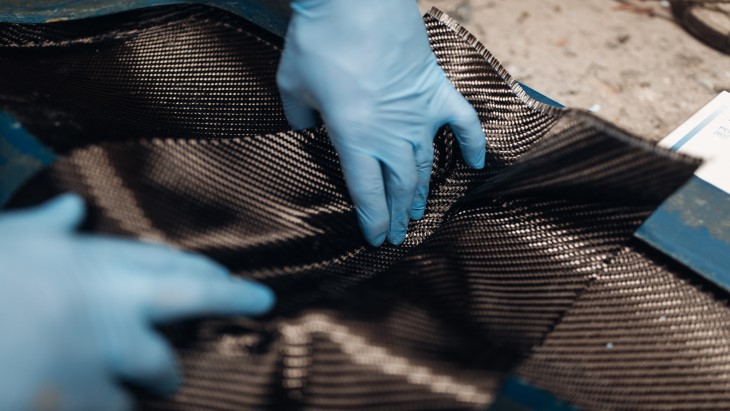Overcoming Automotive Plastics Production Challenges
Plastics components play a significant role in the automotive industry. The use of plastics in automotive part production drives innovation and redefines vehicle designs, efficiency, and functionality. However, the Covid-19 pandemic brought with it numerous challenges for plastics production in the automotive industry.
This article will navigate the various production-specific and industry-wide challenges faced by the automotive plastics manufacturing industry. From skilled labor shortages and production recovery, to disrupted supply chains and the emergence of industry 4.0, this article will highlight the challenges and present automotive manufacturers with opportunities to combat them.
By guiding you through the advantages of polymer use in automotive manufacturing, common manufacturing processes, industry and production challenges, and solutions to the challenges, this article will provide actionable insight to support automotive manufacturers with their plastics part production.

Advantages of Plastics Components
Plastics components are widely manufactured for automotive applications on account of the material’s versatility and functionality. Plastics are dynamic in their ability to fulfill multiple roles, making their use advantageous in the automotive industry.
Benefits of Plastic Use in Automotive Manufacturing:
- Lightweight: Lightweight plastics contribute to fuel efficiency and reduced emissions, thus aligning with the industry’s sustainable goals. Being lightweight also benefits electric vehicles, in which every kilogram saved contributes to an extended battery life.
- Design flexibility: The malleability of many plastics allows for ease in producing parts with intricate designs, features, and diverse geometries. Not only does this enhance aesthetics, but it also improves functionality.
- Cost-effective: Using plastics in automotive manufacturing offers a cost-effective alternative to traditional materials such as aluminum and steel, without compromising quality.
- Safety: Many plastics materials have properties that enhance safety measures in manufactured vehicles. Impact resistance and thermal stability are two highly important properties that can be found in plastics components. For example, fiber-reinforced polymer crumple zones – areas that are designed to absorb impact during a crash or collision – absorb four times the impact that steel would absorb.
Collectively, these attributes position plastics as a cornerstone in automotive innovation. They empower manufacturers to produce vehicles that are efficient, technologically advanced and safe. Before detailing the challenges manufacturers face in automotive part production, it is worth noting the four most common processes used to manufacture these advantageous plastic parts.
Four Common Automotive Plastics Manufacturing Processes
There are several common manufacturing processes used in the automotive industry to produce plastics parts. As is detailed below, each process bears its own advantages and is suitable for the production of specific automotive components.
- Injection Molding
Being one of the most common and efficient plastic production processes, injection molding has a high output rate, making it both efficient and cost-effective. This process is incredibly well-suited for medium to high-volume production and offers high precision. In comparison to other processes, injection molding also produces less waste. In the automotive industry, injection molding can be used for the production of interior trims, bumpers, and dashboards.
- Blow molding
Blow molding is best suited for the high-volume production of hollow plastic parts. This process is cost-effective for the production of large parts with hollow interiors, it allows for the manufacturing of a wide variety of products, it has high reproducibility, among other advantages. For automotive applications, blow molding can be used to produce components like air ducts, armrests, and fuel tanks.
- Thermoforming
In comparison to other processes, thermoforming has relatively low tooling costs and can produce incredibly large and complex parts. Thermoforming is used to process automotive components such as door panels, engine covers, trim pieces, and more.
- Compression molding
Compression molding is a process that is better suited for small production runs and to produce larger or thicker parts. The process is also simpler than other molding or plastics manufacturing processes. Automotive applications of parts produced using compression molding include hoods, fenders, roof panels, brake pedals, and more.
While each process has its own advantages and unique applications, manufacturers select the processes that best align with their specific needs for various automotive components.

Production Challenges in the Automotive Industry
Albeit having efficient and effective processes and materials in place, the automotive industry has faced several disruptions that have tested its resilience and adaptability. With the COVID-19 pandemic, fluctuations in consumer demand, and the advent of Industry 4.0, automotive manufacturing finds itself confronted by a number of challenges.
COVID-19 impacted all facets of society, and the automotive industry was no exception. Factory shutdowns, supply chain interruptions, and a sharp decline in consumer demand were a few ramifications of the pandemic on the automotive industry. The ebbing of the pandemic led to a phase of production recovery, during which production lines resumed operations and consumer demand slowly began to rebound.
Consumer Demand Fluctuations
Depending on the region, economic conditions, and vehicle types, consumer demand fluctuated in the post-pandemic phase. Manufacturers faced the challenge of predicting demand patterns and striking the right balance to avoid either overproducing or underproducing. At the same time, adaptation and innovation were key to responding to the evolving and recovering economic landscape.
Supply Chain Disruptions
Vulnerabilities in global supply chains were amplified by the pandemic, leading to disruptions in part availability. With the production ramp-up, maintaining a steady supply of essential materials and parts became paramount for automotive manufacturers. Disruptions in supply chains also triggered increased costs with manufacturers resorting to alternative material sources and transportation methods. Furthermore, disruptions at one point in the supply chain can cascade through the entire web of suppliers, manufacturers, and service providers in the automotive industry. Therefore, ensuring a robust set-up of processes was paramount to deal with supply chain difficulties.
Lacking a Skilled Workforce
One of the more pressing challenges faced by the automotive manufacturing industry is the scarcity of a skilled workforce. During the pandemic, the industry was hit by workforce reductions and altered economic priorities. As the industry strives to rebound from the disruptive impact of the pandemic, automotive manufacturers have been grappling with developing and retaining skilled talent. The automotive industry’s post-pandemic production recovery has added pressure on manufacturers to optimize their processes. One way of doing so is to embrace technologies that help propel recovery and align with the advent of Industry 4.0.
The Paradigm Shift of Industry 4.0
Characterized by digitization, connectivity, and automation, Industry 4.0 heralded transformative opportunities for the automotive industry. However, the integration of advanced technologies such as the Internet of Things (IoT), artificial intelligence (AI), and robotics poses both challenges and opportunities. On the one hand, manufacturers require a skilled workforce to understand, integrate, and operate these new technologies. On the other hand, the implementation of advanced technologies can increase production efficiency and data-driven decision-making.
Eliminating Challenges and Optimizing the Automotive Industry
To eliminate the challenges brought on by post-pandemic production ramp-ups, fluctuations in consumer demand, disruptions in global supply chains, and the integration of advanced technologies in manufacturing processes, sensXPERT Digital Mold was developed. This process control solution combines over 50 years of material science expertise and predictive machine learning algorithms. Digital Mold enables manufacturers to optimize their processes in real-time with the technology’s ability to characterize materials during processing and forecast their qualitative outcomes.
Moreover, the process control solution creates transparency on in-mold material behavior and helps forecast and avoid any potential changes or deviations. Therefore, the risk of acquiring raw materials from various sources and suppliers is limited and manufacturers can confidently change suppliers to reduce reliance on one and gain access to the most cost-effective alternatives.
Furthermore, sensXPERT Digital Mold is a solution that does not require advanced technological expertise. All the in-mold data collected by sensXPERT is automatically analyzed using machine learning algorithms to present operators with actionable suggestions to optimize their processes. Additionally, being a process control solution, manufacturers can opt to have Digital Mold automatically adjust cycle times to ensure the most optimal part outcomes.
Overall, sensXPERT Digital Mold provides manufacturers with dynamic process adaptation, which has proven to achieve a decrease of up to 50% in existing scrap, an increase of up to 23% in energy savings, and up to 30% cycle time reduction.
Therefore, by integrating advanced technology – such as sensXPERT Digital Mold – in production processes, automotive manufacturers can maintain consistent output to meet supply chain and consumer demands, boost their production efficiency, ease the need for a skilled workforce, and reduce both waste and costs.